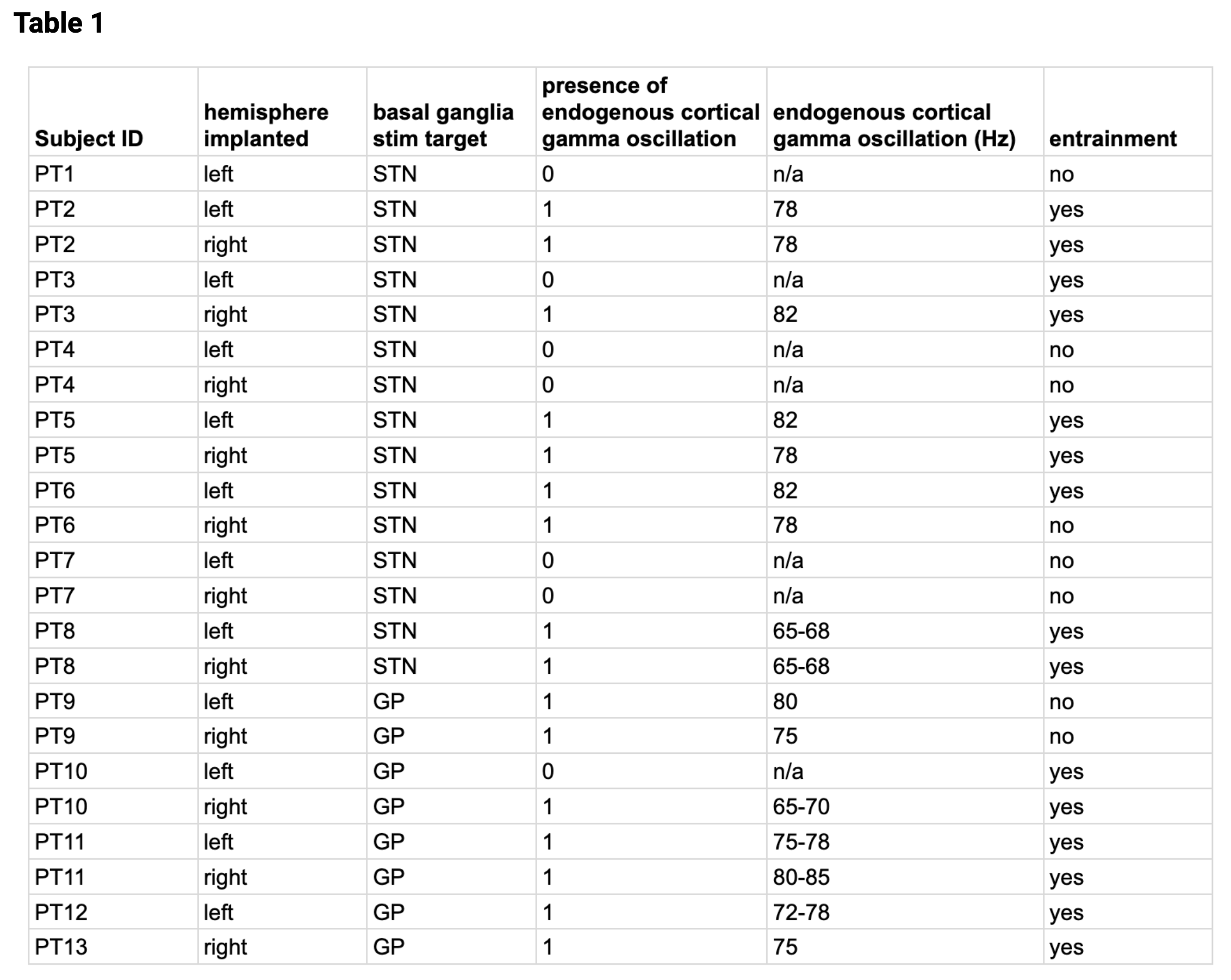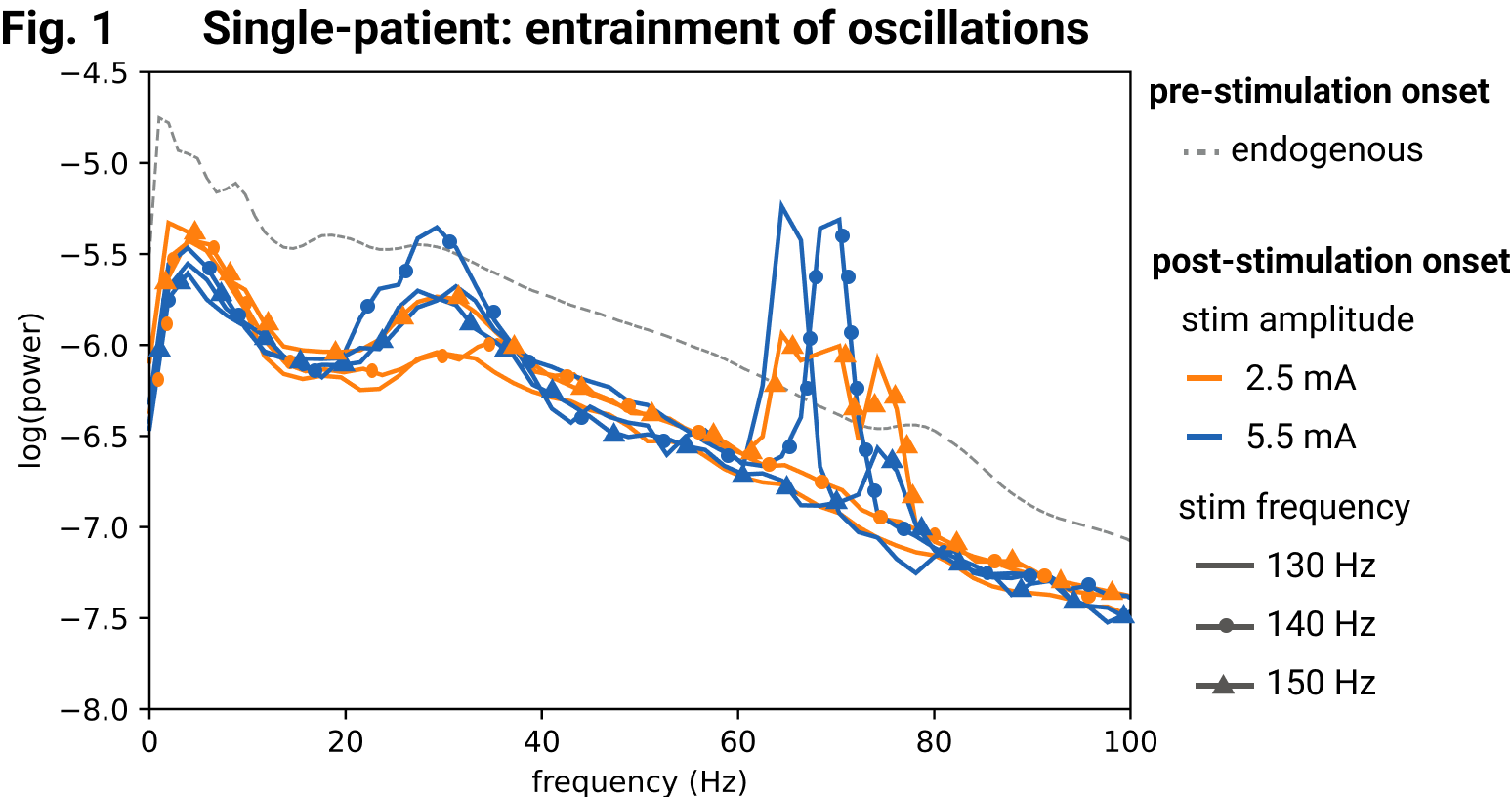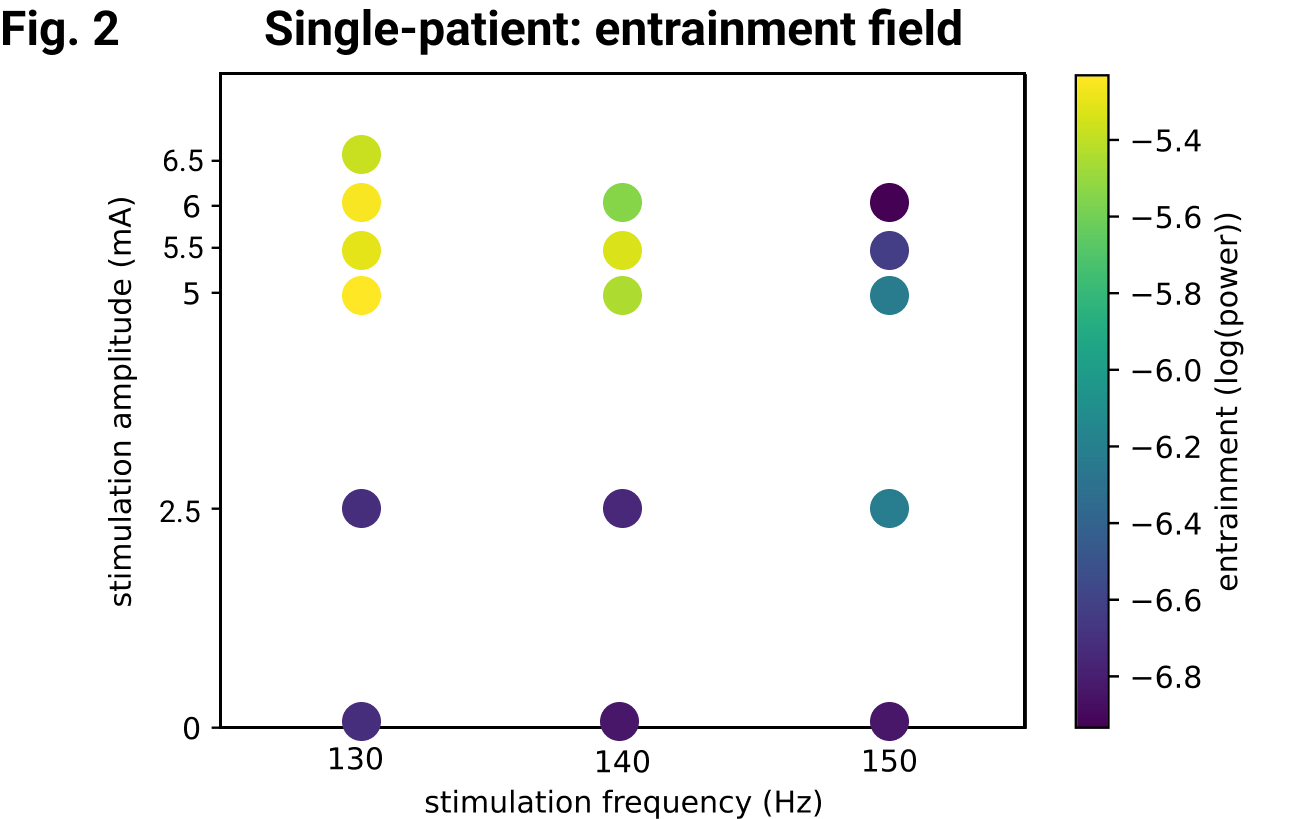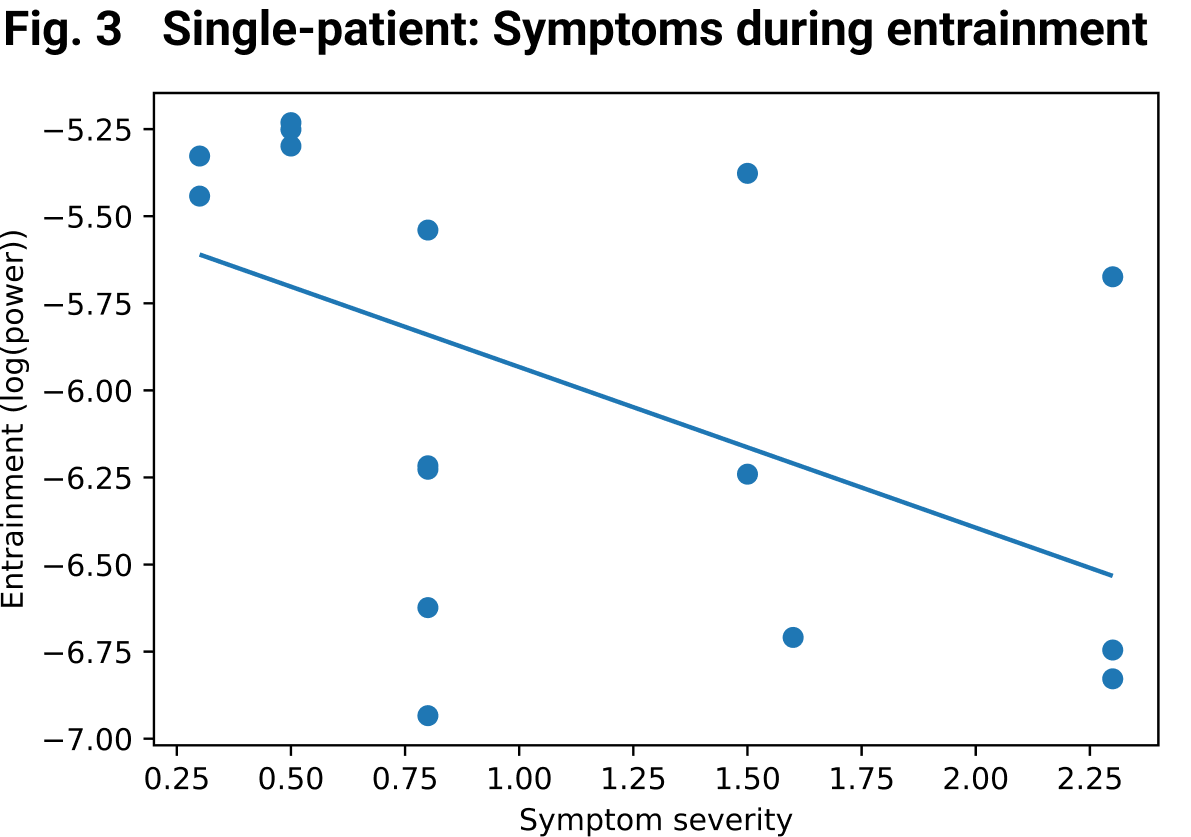Category: Parkinson's Disease: Pathophysiology
Objective: To determine whether entrainment of endogenous cortical gamma oscillations in patients with Parkinson’s Disease during deep brain stimulation is associated with improved motor fluctuations.
Background: During therapeutic deep brain stimulation of the basal ganglia in patients with Parkinson’s disease, the gamma band endogenous cortical oscillation (60-90Hz) is often entrained to one-half the stimulation frequency [1]. However, the clinical relevance of gamma entrainment remains unknown.
Method: We’ve conducted over 2000 hours of cortical field potential recordings in 23 hemispheres of 13 patients with idiopathic Parkinson’s disease implanted with either the investigational Medtronic RC+S [2] or Percept devices (Table 1). In patients with endogenous cortical gamma oscillations (n=10), we quantify gamma entrainment and clinical effects as a function of stimulation frequency and amplitude by step-wise titrations in-clinic. Motor signs of bradykinesia, rigidity and tremor are assessed by a movement disorders neurologist and patients’ self-reports symptoms. Throughout the session, the patients maintain their normal dopaminergic medication routine. We calculate entrainment by computing maximum power of the power spectra at one-half stimulation frequency for each paired set of stimulation parameters. Lastly, we correlate entrainment scores to an overall symptoms/motor signs score to determine the possible clinical significance of entrainment.
Results: We observed cortical gamma oscillations in 70% of our patient hemispheres prior to the initiation of deep brain stimulation. Of hemispheres with endogenous cortical gamma oscillations, entrainment was present in 94% during clinical stimulation (Figure 1). During our in-clinic sessions, we determined the range of entrainment to one-half the frequency of stimulation as a function of stimulation frequencies and amplitudes (Figure 2). We then compared overall symptom/motor sign severity to entrainment (Figure 3) and found a significant inverse relationship between symptom severity and entrainment (Spearman’s r = -0.67, p-value = 0.004).
Conclusion: Gamma entrainment may reflect clinically therapeutic stimulation parameters in symptoms and motor signs of Parkinson’s Disease.
References: [1] Swann, N. C. et al. Gamma Oscillations in the Hyperkinetic State Detected with Chronic Human Brain Recordings in Parkinson’s Disease. J. Neurosci. 36, 6445–6458 (2016).
[2] Gilron, R. ’ee et al. Long-term wireless streaming of neural recordings for circuit discovery and adaptive stimulation in individuals with Parkinson’s disease. Nat. Biotechnol. 39, 1078–1085 (2021).
To cite this abstract in AMA style:
M. Olaru, A. Hahn, J. Anso, C. Oehrn, J. Sermon, R. Bogacz, T. Denison, B. Duchet, S. Little, P. Starr. Associations between stimulation-induced gamma entrainment and motor signs of Parkinson’s Disease [abstract]. Mov Disord. 2022; 37 (suppl 2). https://www.mdsabstracts.org/abstract/associations-between-stimulation-induced-gamma-entrainment-and-motor-signs-of-parkinsons-disease/. Accessed November 15, 2025.« Back to 2022 International Congress
MDS Abstracts - https://www.mdsabstracts.org/abstract/associations-between-stimulation-induced-gamma-entrainment-and-motor-signs-of-parkinsons-disease/




